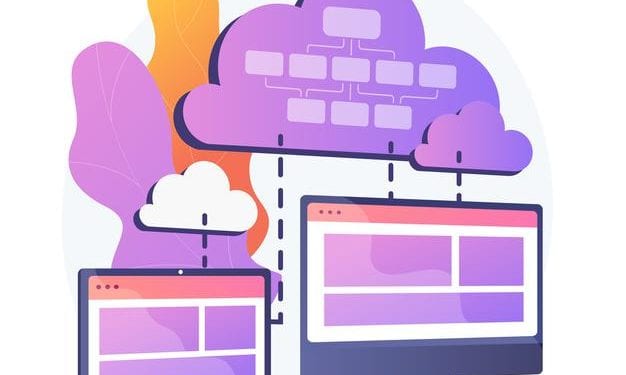Enterprise business agility is a strategic imperative for financial services organizations that are finding new ways to better service customers while continuing to meet compliance and regulatory demands.
In the last few years, many financial institutions have focused on business transformation strategies with cloud as the foundation to differentiate and gain competitive advantage. One of the key business drivers of cloud transformation for organizations was to lower their infrastructure costs while gaining scalability and improved DevOps agility.
Has public cloud adoption helped finservs reduce their infrastructure TCO?
Many financial institutions are finding that moving workloads to public clouds does not lend itself to TCO reduction in the long term. With easy access to on-demand compute and storage, it is easy for organizations to lose sight of resource consumption on the public clouds resulting in increased cloud spend.
In IDG’s Cloud Computing Survey, 40% respondents cited the need to control cloud costs as an obstacle to their continued use of cloud. This challenge is well recognized by leading public cloud providers who are constantly lowering their service fees. According to AWS Partner Network blog, Amazon Web Services has reduced prices 67 times since AWS launched in 2006.
Regaining control of cloud costs boils down to a series of measures. Businesses need visibility and an accurate picture of their cloud use, and central tools to allocate resources and track how they’re being used. They need the ability to identify their major cloud cost centres, but also to drill down and find cloud instances that aren’t being used and decommission them to reduce unnecessary outlay.
Financial institutions that had taken a ‘lift and shift’ approach to moving applications to the public clouds are finding that they don’t perform at scale, and that attempts to lower TCO and modernize IT estate don’t always bear fruit.
The cloud workloads are constantly growing and with financial institutions adopting cloud native technologies for their application build, the resource consumption is bound to increase exponentially. Cloud native computing leverages the microservices architecture which requires application decomposition into atomic units. As a result, each of them is running in a separate virtual machine (VM) or a container, leading to thousands of cloud workloads and an increased resource consumption if not designed properly.
Are your workloads on the right cloud?
The future of finserv infrastructure is hybrid multi-cloud. While private clouds have associated CapEx costs, the OpEx cost of private cloud is significantly lower compared to public cloud OpEx costs when the volume of virtual machines running on the cloud is high. Financial institutions should make data driven decisions regarding workload placement to either a public cloud or a private cloud.
Why private clouds for finservs?
A private cloud is an integral part of a hybrid multi-cloud strategy for financial services organizations. It enables financial institutions to derive competitive advantage from agile implementations without incurring the security and business risks of a public cloud.
Private clouds provide a more stable solution for financial institutions by dedicating exclusive hardware within financial firms’ own data centres. Private clouds also enable financial institutions to move from a traditional IT engagement model to a DevOps model and transform their IT groups from an infrastructure provider to a service provider (via a SaaS model).
OpenStack for financial services
OpenStack provides a complete ecosystem for building private clouds. Built from multiple sub-projects as a modular system, OpenStack allows financial institutions to build out a scalable private (or hybrid) cloud architecture that is based on open standards. OpenStack enables application portability among private and public clouds, allowing financial institutions to choose the best cloud for their applications and workflows at any time, without lock-in. It can also be integrated with a variety of key business systems such as Active Directory and LDAP.
OpenStack software provides a solution for delivering infrastructure as a service (IaaS) to end users through a web portal and provides a foundation for layering on additional cloud management tools. These tools can be used to implement higher levels of automation and to integrate analytics-driven management applications for optimizing cost, utilization and service levels. OpenStack software provides support for improving service levels across all workloads and for taking advantage of the high availability capabilities built into cloud aware applications.
In the world of Open Banking, the delivery of a financial application or digital customer service often depends on many contributors from various organizations working collaboratively to deliver results.
Large financial institutions, the likes of PayPal and Wells Fargo are using OpenStack for their private cloud builds. These companies are successfully leveraging the capabilities of OpenStack software that enables efficient resource pooling, elastic scalability and self-service provisioning for end users.
The Challenge – The biggest challenge of OpenStack is everyday operations automation, year after year, while OpenStack continues to evolve rapidly.
The Solution – Total automation that decouples architectural choices from the operations codebase that supports upgrades, scaling, integration and bare metal provisioning. From bare metal to cloud control plane, Charmed OpenStack uses automation everywhere leveraging model-driven operations.
Execute your hybrid cloud strategy
Financial institutions will need to leverage the right mix of cloud services to maximize application performance while onboarding innovative new capabilities.
Using cost effective open source private cloud infrastructure and placing workloads on public clouds with considerations for application performance, security and compliance, economics and consumption model shall allow financial institutions to optimize their CapEx and OpEx costs.
OpenStack provides financial institutions the ability to build a cost efficient private cloud infrastructure and also allows the capability to seamlessly move workloads from one cloud to another, whether private or public. Getting value in the cloud means optimizing in several key areas including consumption, cost and performance. For financial institutions to successfully execute their hybrid cloud strategies, they will need to adopt dynamic IT operating models powered by automation and new skillsets.











